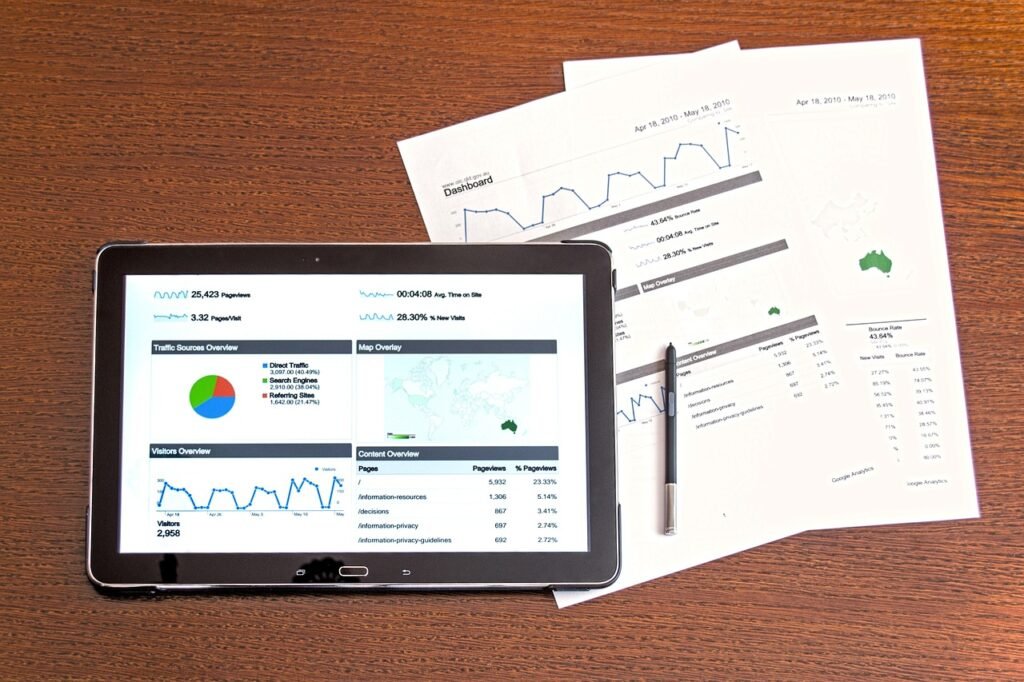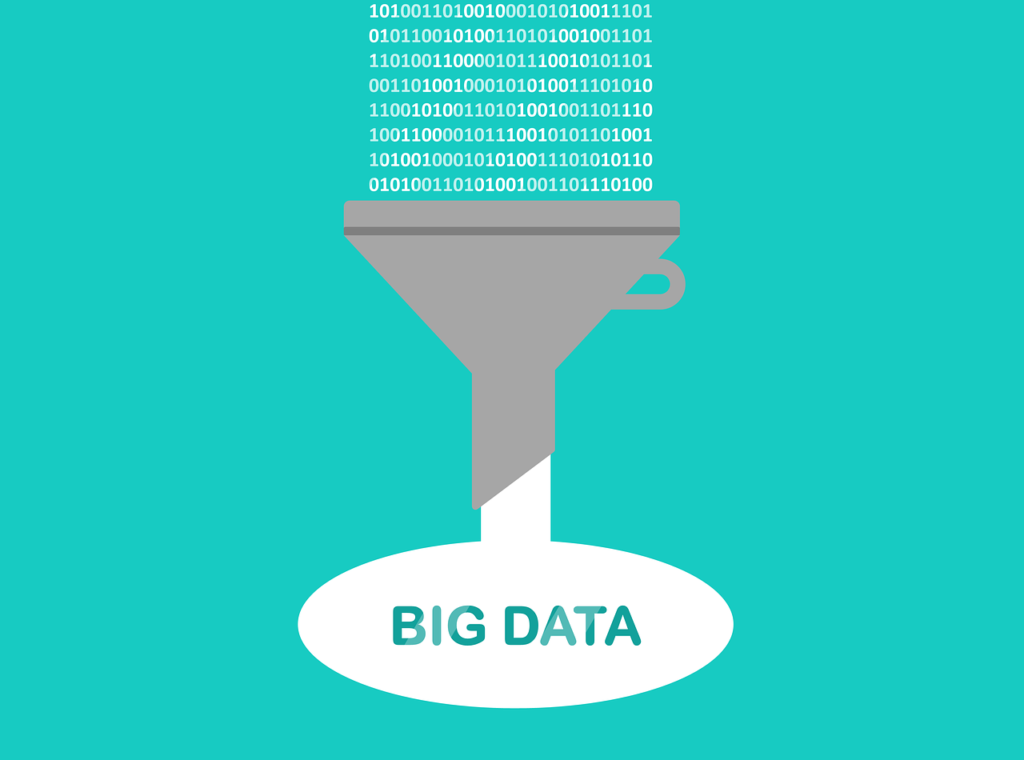
What is Big Data?
Big Data refers to datasets that are too large, complex, or fast-changing to be processed using traditional data management tools. It encompasses three key characteristics, commonly known as the 3Vs:
- Volume: The massive scale of data generated every second.
- Velocity: The speed at which data is produced and processed.
- Variety: The diverse types of data (structured, semi-structured, unstructured).
In some cases, Veracity (data accuracy) and Value (usefulness of data) are added, making it the 5Vs of Big Data.
What’s Driving the Interest in Big Data?
The surge in interest around Big Data can be attributed to several key factors, each reflecting how modern technologies, business needs, and societal trends are transforming the way data is utilized. As organizations increasingly look to extract insights from vast datasets, several powerful drivers are at play. Let’s explore what’s fueling the rapid adoption of big data technologies.
1. Explosive Growth of Data Generation
The volume of data generated has skyrocketed in recent years. Every day, billions of people interact with digital systems—social media platforms, e-commerce sites, IoT devices, mobile apps, and more—all of which contribute to the massive increase in data generation.
- Social Media: Platforms like Facebook, Instagram, and Twitter generate enormous volumes of user-generated content—photos, videos, likes, comments, and shares—that can be harnessed for insights.
- IoT (Internet of Things): Devices ranging from smart home gadgets to industrial sensors generate continuous streams of real-time data, adding to the overall data explosion.
- Business Transactions: E-commerce platforms and financial systems generate transactional data that can be analyzed to uncover patterns in consumer behavior and business performance.
As data becomes more abundant and complex, traditional data processing tools and systems struggle to keep up, which has made big data tools and technologies crucial for effectively managing and deriving value from this growth.

2. Advancements in Technology
The rapid development of new technologies has made it easier, faster, and more cost-effective to store, process, and analyze big data.
- Cloud Computing: Cloud services like AWS, Google Cloud, and Microsoft Azure offer scalable storage and computing power, eliminating the need for businesses to maintain expensive on-premise hardware.
- Data Storage Technologies: Innovations like Hadoop Distributed File System (HDFS) and object storage systems (e.g., Amazon S3) enable organizations to store massive volumes of unstructured data at a lower cost.
- Processing Frameworks: Tools like Apache Spark and Apache Flink allow organizations to process big data in real-time and in distributed environments, making data analysis faster and more efficient.
These advancements have made big data more accessible to organizations of all sizes, reducing barriers to entry and allowing for deeper insights at a fraction of the cost and complexity that previously existed.
3. Increased Demand for Real-Time Insights
Businesses today are not just interested in historical data but also in real-time insights that can drive immediate decision-making. Whether it’s predicting customer behavior, identifying fraud, or optimizing supply chain operations, real-time big data analytics enables organizations to act faster than ever before.
- Financial Services: Real-time monitoring of transactions can help detect fraudulent activity as it occurs.
- Retail: Real-time inventory tracking allows retailers to optimize stock levels and pricing in response to demand fluctuations.
- Healthcare: Big data helps in analyzing patient data in real-time, enabling faster diagnosis and better patient outcomes.
The ability to make data-driven decisions in real-time is crucial for staying competitive, and this demand for agility is driving the growth of big data technologies.
4.Competitive Advantage and Innovation
In today’s data-driven world, organizations are looking for ways to differentiate themselves and gain a competitive edge. Big data allows businesses to uncover hidden insights and opportunities that can be leveraged for innovation and strategic advantage.
- Customer Insights: By analyzing data from customer interactions, businesses can better understand preferences, pain points, and behaviors, allowing them to offer tailored products, services, and marketing strategies.
- Operational Efficiency: Big data analytics helps streamline operations by identifying inefficiencies, optimizing supply chains, and improving resource allocation.
- Product Development: Real-time feedback from users and monitoring of market trends helps companies innovate and stay ahead of competitors.
By unlocking the full potential of big data, companies can not only enhance current processes but also explore new business models and opportunities for growth.
Core Terminology in Big Data
Data Types
In data science, understanding the different types of data is fundamental to organizing, processing, and analyzing data effectively. Data types determine how data is stored, manipulated, and interpreted within different applications. Here’s an overview of various data types:
1. Structured Data
- Definition: Structured data is organized in a fixed format, typically in rows and columns, similar to what you would find in a traditional database. This data type is highly organized and follows a defined schema.
- Examples:
- Relational databases like MySQL, Oracle, and SQL Server store structured data in tables.
- Examples include sales transactions, customer information, inventory levels, etc.
- Common data types in structured data: Integer, Float, Boolean, Date, String, etc.
- Advantages:
- Easy to store and manage using relational databases.
- Well-suited for operations like JOINs, filtering, sorting, and querying using SQL.
- Limitations:
- Requires a fixed schema at creation, which can be limiting for complex datasets.
- May not be well-suited for handling semi-structured or unstructured data.
2. Semi-Structured Data
- Definition: Semi-structured data has some organizational properties but does not fit neatly into rows and columns. It often has a hierarchical structure with tags or markers that provide context or metadata.
- Examples:
- JSON (JavaScript Object Notation), XML (Extensible Markup Language), and YAML (YAML Ain’t Markup Language) are common formats for semi-structured data.
- Log files, configuration files, and web content are also examples.
- Data from IoT sensors, social media posts, and web scraping often falls into this category.
- Advantages:
- Flexible structure makes it easier to capture complex data relationships and hierarchical data structures.
- Well-suited for applications requiring nested data, like nested lists or objects.
- Limitations:
- Difficult to perform traditional database operations like JOINs without flattening the data structure.
- Requires specialized tools to query and analyze efficiently.
3. Unstructured Data
- Definition: Unstructured data does not have a specific format or organization and is often free-form. This type of data can include text, audio, video, images, and other multimedia files.
- Examples:
- Social media posts, emails, video recordings, audio files, images, web pages, and scanned documents are common examples of unstructured data.
- Natural language text is a prominent example, making up a significant portion of unstructured data.
- Advantages:
- Capable of capturing diverse and complex data types.
- Useful for discovering hidden patterns, trends, and insights in large-scale data sets.
- Limitations:
- Lacks inherent structure, making analysis and querying more complex.
- Requires specialized tools like natural language processing (NLP) to interpret and derive meaning.
4. Numeric Data Types
- Definition: Numeric data types are those that represent numerical values. These are often used for quantitative data like counts, measurements, or calculations.
- Examples:
- Integer: Whole numbers, e.g., 1, 42, -7.
- Float (Decimal Number): Numbers with decimal places, e.g., 3.14, 0.001, -123.456.
- Double: Numbers with higher precision than floats, e.g., 3.14159.
- Long: An integer data type that can store very large numbers.
- Complex: Numbers with real and imaginary parts, used primarily in mathematics and engineering applications.
- Usage: Widely used in applications requiring numerical computations, statistical analyses, and data aggregation.

5. Text Data Types
- Definition: Text data types represent sequences of characters, which can include letters, numbers, and special characters.
- Examples:
- String (VARCHAR, TEXT): A sequence of characters, e.g., “Hello World”.
- CHAR: Fixed-length character string, e.g., CHAR(50) for a name field.
- LONG VARCHAR: Allows for storing long text fields like descriptions, comments, and notes.
- ENUM: A set of predefined string values (e.g., ‘Male’, ‘Female’).
- Advantages:
- Useful for storing textual data, including names, addresses, and notes.
- Can be easily manipulated and queried using SQL.
- Limitations:
- Not well-suited for handling large amounts of text data; may require database normalization or partitioning.
- Structured Data:
- Organized in rows and columns (e.g., relational databases).
- Semi-Structured Data:
- Partially organized data with tags or markers (e.g., JSON, XML).
- Unstructured Data:
- Lacks a predefined structure (e.g., text, videos, social media posts).
Big Data Storage
- Data Lake:
- A centralized repository storing raw data in its original format until needed.
- Example: AWS S3.
- Data Warehouse:
- Stores processed and structured data for analysis.
- Example: Snowflake, Google BigQuery.
- Hadoop Distributed File System (HDFS):
- A distributed file system for storing large datasets across clusters.
Big Data Processing Frameworks
- Apache Hadoop:
- An open-source framework for processing large datasets using a distributed computing model.
- Apache Spark:
- A powerful big data processing engine known for in-memory computation and speed.
- Apache Flink:
- Focuses on stream and batch data processing with low latency.
Data Pipelines and Workflow
- ETL (Extract, Transform, Load):
- A process that extracts raw data, transforms it into a usable format, and loads it into a storage system.
- Stream Processing:
- Processing data in real-time as it’s generated (e.g., Apache Kafka).
- Batch Processing:
- Processing data in chunks or batches (e.g., MapReduce).
Big Data Querying
- SQL (Structured Query Language):
- Language for querying structured data in relational databases.
- Hive:
- A data warehouse infrastructure that enables SQL-like querying of big data on Hadoop.
- Presto:
- A distributed SQL query engine optimized for large-scale datasets.
Data Formats
- CSV:
- Comma-separated values for structured data.
- JSON (JavaScript Object Notation):
- Lightweight format for semi-structured data.
- Parquet:
- A columnar storage format optimized for big data analytics.
- Avro:
- A row-based serialization format for Hadoop.
Cloud and Distributed Computing
- Cloud Computing:
- Using remote servers to store, manage, and process data (e.g., AWS, Google Cloud, Azure).
- Distributed Computing:
- A computing model where tasks are distributed across multiple machines.
Big Data Tools
- Apache Kafka:
- A platform for building real-time streaming data pipelines.
- Elasticsearch:
- A search engine for textual and unstructured data.
- Tableau:
- A data visualization tool for creating interactive dashboards.
Machine Learning and AI
- MLlib:
- A machine learning library built into Apache Spark.
- TensorFlow:
- An open-source platform for machine learning and deep learning.
Data Governance and Security
- Data Lineage:
- Tracking the origin and transformations of data over time.
- Data Encryption:
- Securing data through cryptographic methods to prevent unauthorized access.
3. Key Concepts in Big Data
1. Scalability
The ability to handle increasing amounts of data by adding more resources, such as servers or storage.
2. Fault Tolerance
Systems designed to operate seamlessly even when some components fail. For example, Hadoop replicates data across nodes to ensure reliability.
3. Parallel Processing
Breaking down tasks into smaller parts and processing them simultaneously across multiple processors.
4. Real-Time Analytics
Analyzing and deriving insights from data as it is generated. This is crucial for applications like fraud detection and recommendation systems.
5. Data Sharding
Dividing a dataset into smaller, more manageable pieces, often to distribute them across multiple machines.
4. Emerging Terminologies in Big Data
1. Edge Computing
Processing data closer to its source (e.g., IoT devices) rather than sending it to centralized servers.
2. Data Fabric
An architecture that integrates data across platforms and locations, enabling seamless access and processing.
3. Data Mesh
A decentralized approach to managing and processing data by treating it as a product owned by teams.
4. Federated Learning
A machine learning technique that trains models across decentralized data sources without transferring data to a central location.
5. Challenges in Big Data
- Data Quality: Ensuring accuracy, consistency, and reliability of massive datasets.
- Scalability: Handling the growing volume of data efficiently.
- Integration: Combining data from multiple, often incompatible, sources.
- Security and Privacy: Protecting sensitive data from breaches and ensuring compliance with regulations like GDPR.
6. Why Learn Big Data Terminology?
learning the terminology is essential for anyone aiming to understand or work within the field. Whether you’re a data scientist, business leader, developer, or analyst, having a solid grasp of the key concepts, terms, and tools associated with big data will enhance your ability to navigate complex data landscapes.
1.Enhanced Communication:
- Big data projects often require collaboration across multiple departments and teams, including data engineers, analysts, and business decision-makers. Understanding the language of big data ensures that you can:
- Speak the Same Language: When all stakeholders, from engineers to executives, are on the same page, it helps streamline workflows and reduces miscommunication. Knowing the terminology enables you to have more effective conversations about data storage, processing, analytics, and interpretation.
- Clearer Requirements and Expectations: Being familiar with terms like “data lake,” “ETL,” or “real-time analytics” allows you to communicate specific project requirements more effectively. It also ensures that team members have aligned expectations and understand the scope and challenges of the work.
2.Better Decision-Making and Strategy Formulation:
In a data-driven world, decision-making is increasingly reliant on the ability to analyze large datasets and extract insights from them. Understanding big data terminology helps you make more informed, strategic decisions by enabling you to:
- Evaluate Tools and Technologies: When you know terms like “Apache Spark,” “Hadoop,” or “NoSQL,” you’re better equipped to assess which tools or frameworks are best suited for your organization’s needs.
- Prioritize Business Goals: Understanding the importance of concepts such as “data governance,” “data security,” and “predictive analytics” allows you to prioritize data initiatives that directly impact business objectives.
- Risk Management: Big data can uncover risks and opportunities that you might otherwise miss. By knowing how to interpret data through the lens of big data concepts, you can better identify potential pitfalls and take proactive steps to mitigate them.

3.Career Advancement:
As big data continues to grow in importance across industries, having knowledge of the fundamental terminology is a highly valued skill in the job market. Some reasons why learning big data terminology can advance your career:
- Increased Employability: Many employers look for candidates who are familiar with data science, data engineering, and analytics terminology. Understanding big data terms shows potential employers that you can navigate complex data ecosystems.
- Faster Career Progression: In many roles, especially in tech and data-driven fields, knowing big data terminology helps accelerate your ability to take on higher-level responsibilities. It gives you the language to participate in key meetings, make informed recommendations, and engage in data-driven decision-making.
- Position Yourself as a Thought Leader: When you’re proficient in big data terminology, you’re more likely to be seen as an expert in your field, which can open doors to leadership roles, speaking engagements, or industry recognition.
4.Effective Problem-Solving
- Big data often presents complex, multifaceted challenges. By learning the terminology, you develop a toolkit to approach these challenges in a structured and efficient way. Understanding concepts like data cleaning, data preprocessing, or machine learning algorithms allows you to:
- Identify Issues: Knowing the common challenges associated with big data—such as data inconsistency, missing values, or processing bottlenecks—helps you identify and resolve problems faster.
- Leverage Best Practices: Big data terminology often carries with it a deeper understanding of best practices in handling, processing, and analyzing data. Familiarity with terms like “data wrangling” or “data normalization” can help you adopt these best practices more effectively in your own work.